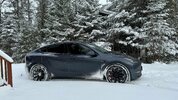GtiMart
Active Member
I think it's harder for people that drove automatic transmissions, and easier for people that drove manual transmissions before. With a manual, releasing the accelerator does provide some deceleration, and downshifting would provide more. In an auto, releasing the accelerator mostly lets the car coast.
Each car is different in its power curve nd delivery, braking performance etc. If you were able to switch cars before, lease a car, use a friend's car etc, you should be able to adjust to driving an EV.
Each car is different in its power curve nd delivery, braking performance etc. If you were able to switch cars before, lease a car, use a friend's car etc, you should be able to adjust to driving an EV.



